Technology is enabling new models of teaching and learning. Educators are acutely aware of a disconnect between the way 21st century students access and interact with information in their everyday lives and how it happens in the classroom.

International Symposium on Disrupting Higher Education
Outside of the classroom, students use technology in a non-formal way to actively pull information on topics which are of interest to them. As a result, they engage with and are more likely to learn from the information. In the classroom the teaching approach is still primarily a didactic approach which pushes information to the students; disempowering them in terms of active, self-directed learning. Educators are increasingly looking to new, technology-enhanced models of teaching and learning to engage their students and to enable educators to focus on the development of higher order skills such as problem solving and critical thinking.
The Flipped Classroom is one such model of teaching and learning that is currently receiving a lot of attention. At a recent symposium on online higher education – Disrupting Higher Education – held in the Science Gallery at Trinity College Dublin, Professor Simon Bates of the University of British Columbia spoke about the application and benefits of the approach in Physics teaching. He also discussed how technology in general, and MOOCs in particular, are driving and enabling new models of teaching and learning such as the Flipped Classroom.
With a Flipped Classroom approach, the usual teaching and learning model is flipped or inverted. The initial learning happens in advance of students coming to class as a result of ‘research’, inquiry-based homework set by the instructor. Resources relating to the homework are made available to the students. Students come to class ‘primed’ for consolidation and higher order learning the following day. Class time is used as an opportunity for discussion, practice activities, guided reflection and for the educator to provide targeted learning interventions.
While there are many pedagogical benefits to adopting the Flipped Classroom model of teaching and learning, research is needed as to the appropriate deployment of technology within this model. ALMANAC, one of our current projects, is researching the effectiveness of innovative technologies in supporting and potentiating the Flipped Classroom model of teaching and learning. The technology outputs will be trialled in schools within a Flipped Classroom context. As part of the research, the effectiveness of the Flipped Classroom approach will compared to traditional teaching and learning approaches.
Developments in technology and the enthusiasm with which 21st century learners are embracing it is prompting educators to rethink existing pedagogical models. However, we should be careful not to throw the baby out with the bathwater; it’s not about replacing existing models with technology, rather it’s about identifying appropriate 21st century pedagogical models in which technology plays a pivotal role in fostering active, more engaged learning.
 About the Author: Lynda Donovan is the Pedagogical Lead at the Learnovate Centre. Lynda ensures that the Centre’s technologies are deployed as part of innovative learning environments designed to enhance learning, address industry challenges and provide competitive advantage to the Centre’s industry partners.
About the Author: Lynda Donovan is the Pedagogical Lead at the Learnovate Centre. Lynda ensures that the Centre’s technologies are deployed as part of innovative learning environments designed to enhance learning, address industry challenges and provide competitive advantage to the Centre’s industry partners.



